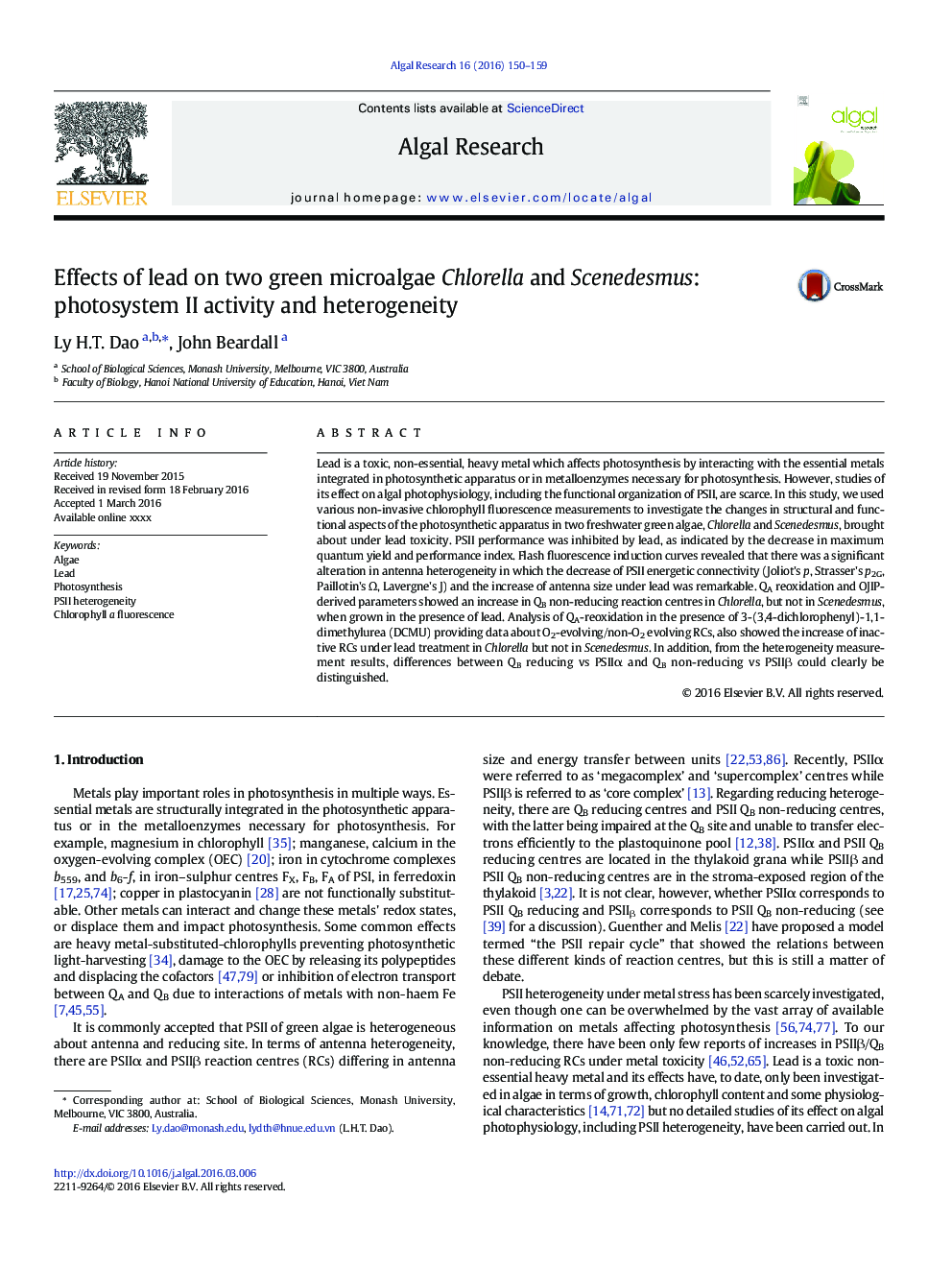| Article ID | Journal | Published Year | Pages | File Type |
|---|---|---|---|---|
| 8087051 | Algal Research | 2016 | 10 Pages |
Abstract
Lead is a toxic, non-essential, heavy metal which affects photosynthesis by interacting with the essential metals integrated in photosynthetic apparatus or in metalloenzymes necessary for photosynthesis. However, studies of its effect on algal photophysiology, including the functional organization of PSII, are scarce. In this study, we used various non-invasive chlorophyll fluorescence measurements to investigate the changes in structural and functional aspects of the photosynthetic apparatus in two freshwater green algae, Chlorella and Scenedesmus, brought about under lead toxicity. PSII performance was inhibited by lead, as indicated by the decrease in maximum quantum yield and performance index. Flash fluorescence induction curves revealed that there was a significant alteration in antenna heterogeneity in which the decrease of PSII energetic connectivity (Joliot's p, Strasser's p2G, Paillotin's Ω, Lavergne's J) and the increase of antenna size under lead was remarkable. QA reoxidation and OJIP-derived parameters showed an increase in QB non-reducing reaction centres in Chlorella, but not in Scenedesmus, when grown in the presence of lead. Analysis of QA-reoxidation in the presence of 3-(3,4-dichlorophenyl)-1,1-dimethylurea (DCMU) providing data about O2-evolving/non-O2 evolving RCs, also showed the increase of inactive RCs under lead treatment in Chlorella but not in Scenedesmus. In addition, from the heterogeneity measurement results, differences between QB reducing vs PSIIα and QB non-reducing vs PSIIβ could clearly be distinguished.
Related Topics
Physical Sciences and Engineering
Energy
Renewable Energy, Sustainability and the Environment
Authors
Ly H.T. Dao, John Beardall,
